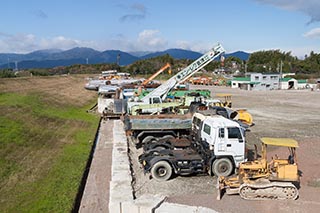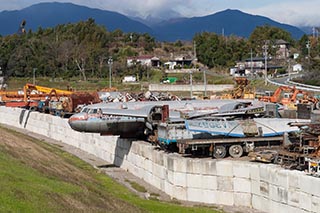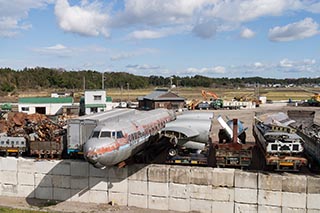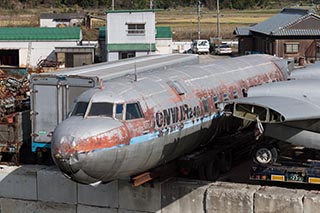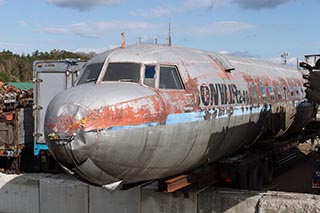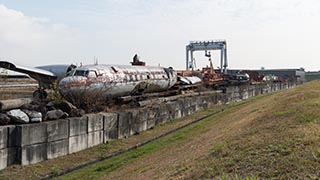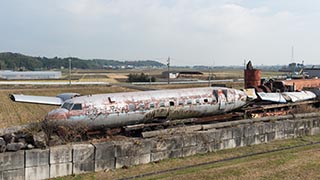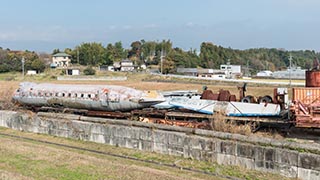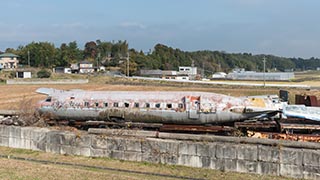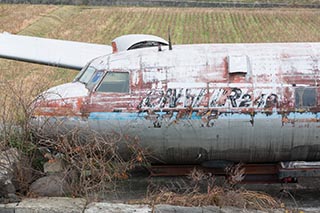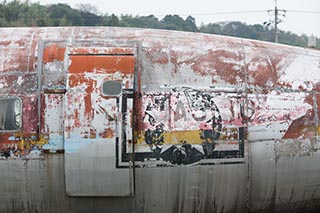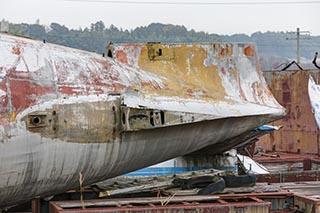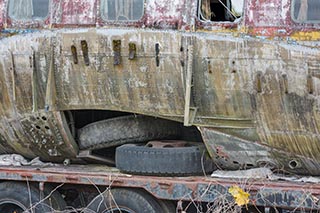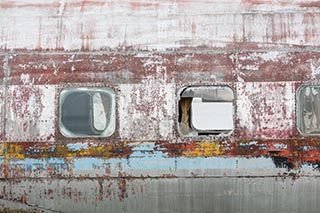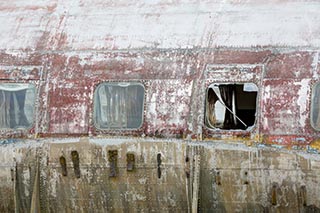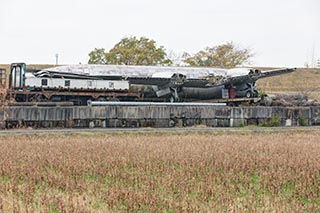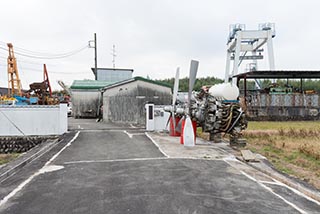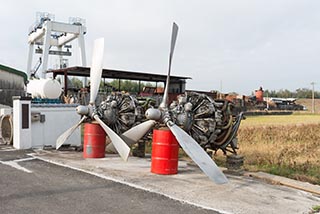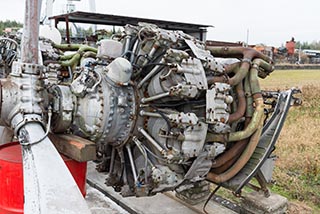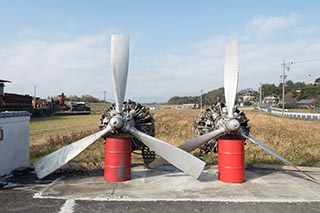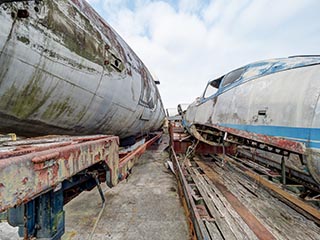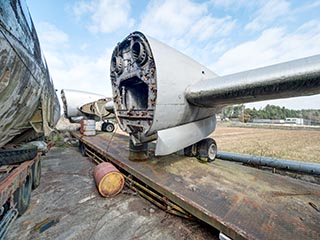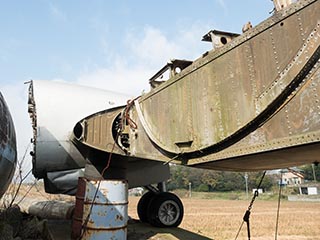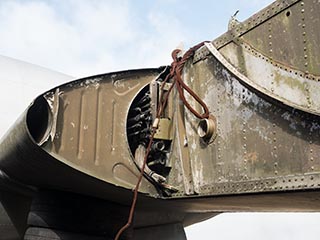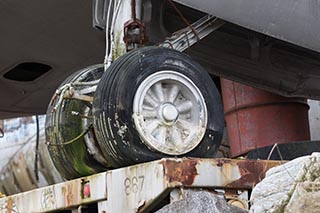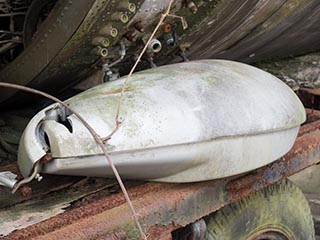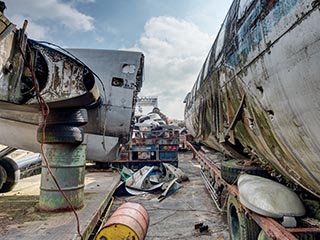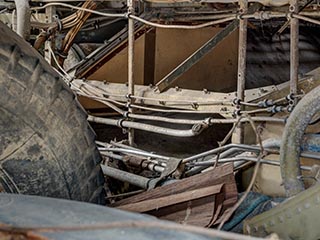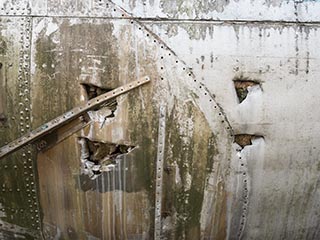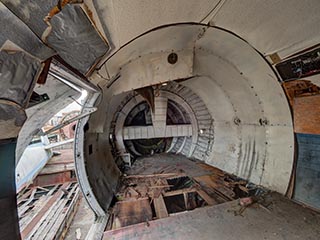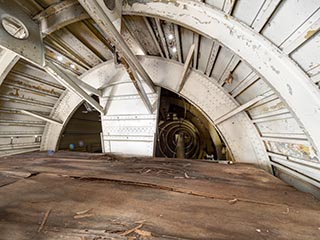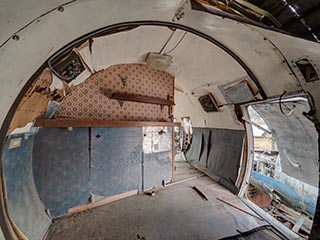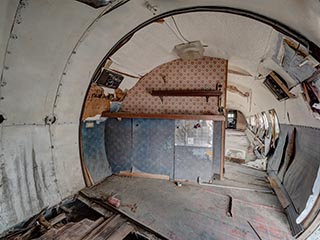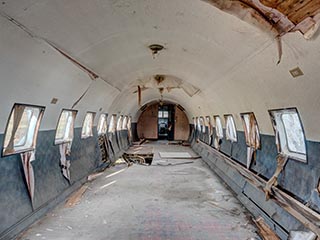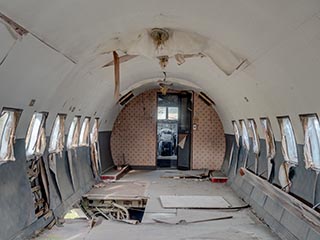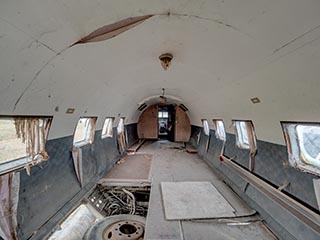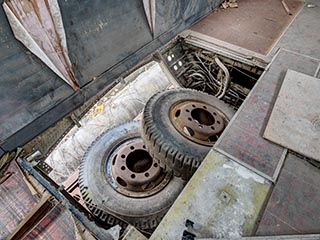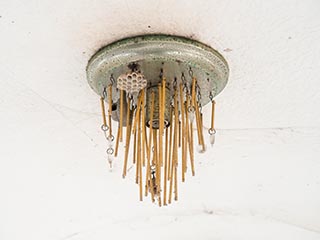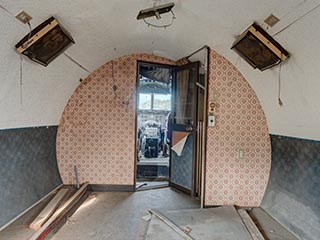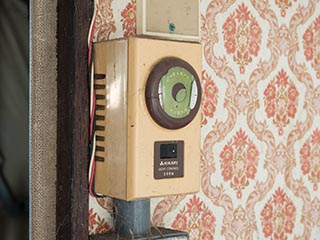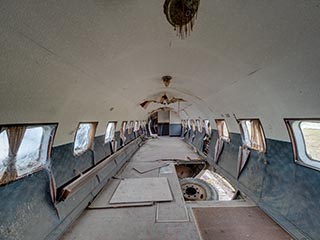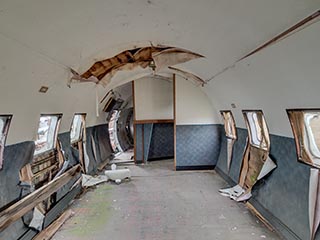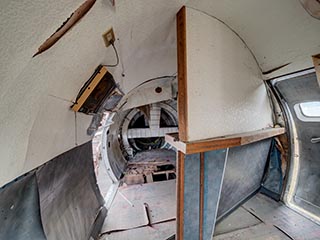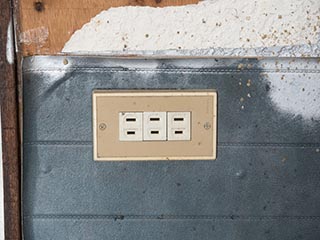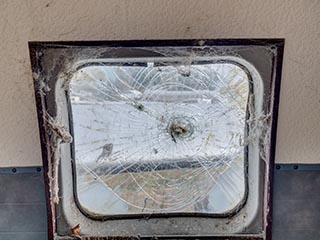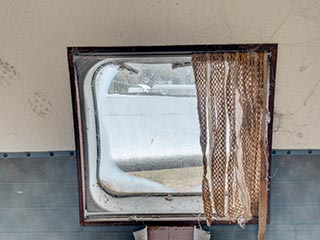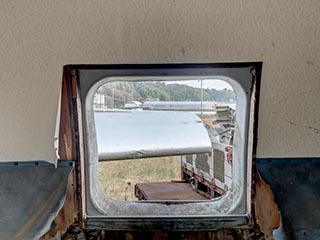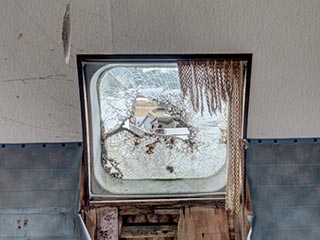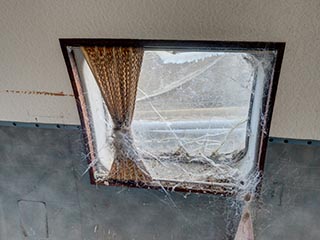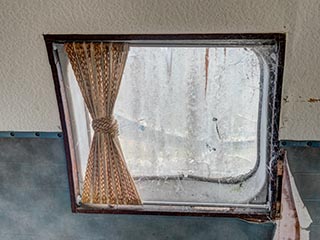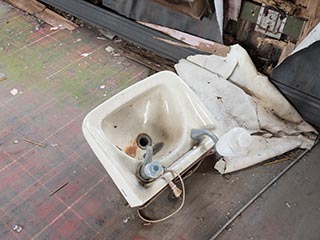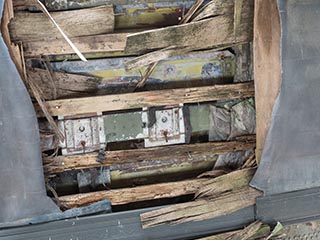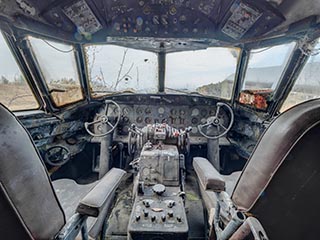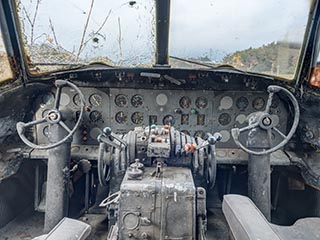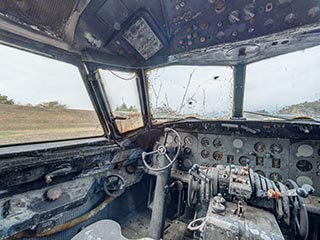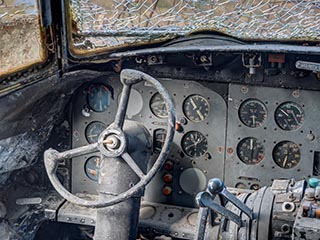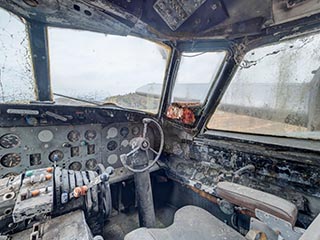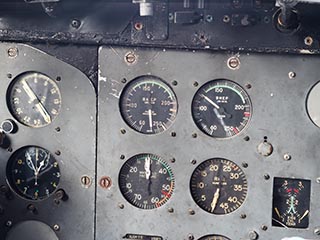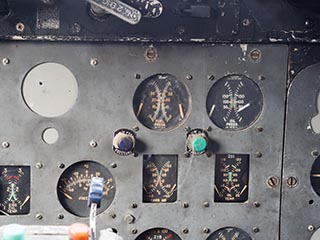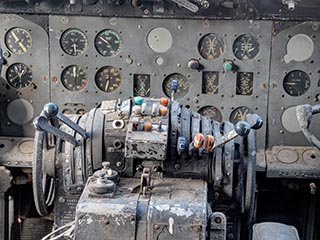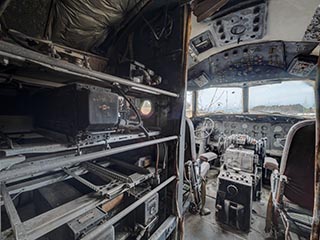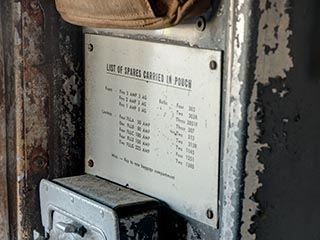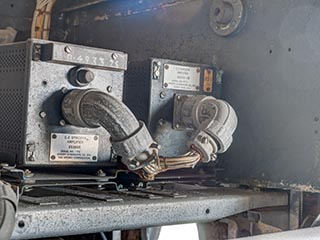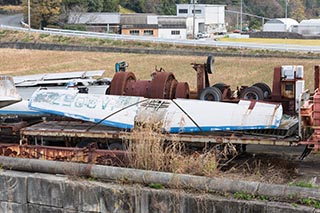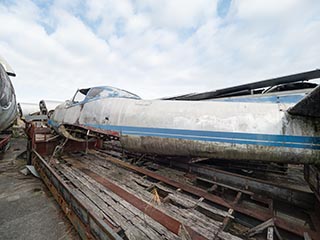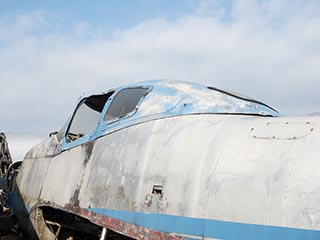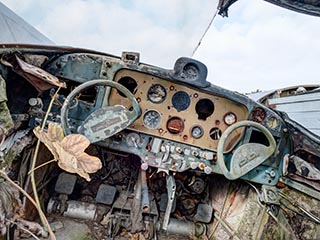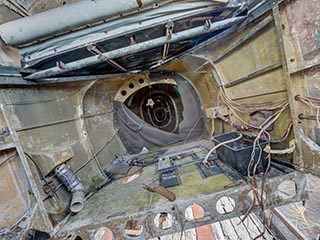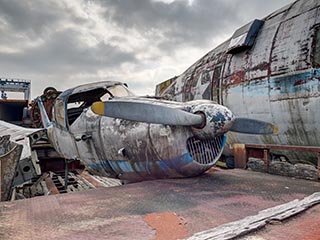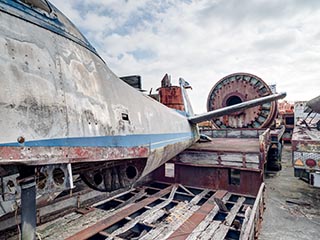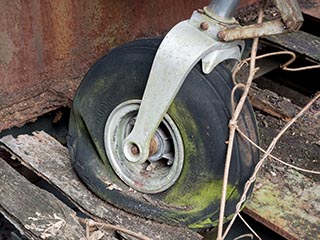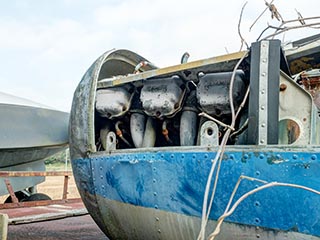In December 2003, I went on a cycling tour from Tokyo to Osaka and back. While I was riding through Mie Prefecture on the return leg, I noticed the remains of an old airliner in a junkyard by the side of the road. This isn't something that you see very often, so I stopped to have a look and take some photographs. The fuselage was sitting on the back of a trailer, and the disassembled wings and tail assembly were in separate trailers nearby. Two other trailers held the fuselage and wing of a smaller single-engined aircraft. Lettering on the side of the airliner's fuselage identified it as a Convair 240.
I thought the sight of this ancient, ruined airliner was unusually poignant. When new it would have been among the most technologically advanced machines in the world, but it was now a decaying, neglected relic. It once soared high above the ground, carrying passengers through the sky at hundreds of miles per hour, but it would be earthbound forever more. I wondered what places it had visited over the years, and how it ended up here.
I later did a little research online, and learned that the Convair 240 was a 40 seat short haul airliner that first entered service in 1948. You can read more about the aircraft here.
I found some information about this particular Convair 240 on an interesting Japanese language webpage called History of the Convair Liner in Japan, and later found more details here. These pages are worth a look even if you don't read Japanese, because they have some interesting photographs. Plane Logger also lists the airliner's registration history.
The following summary of the aircraft's history is drawn from the above sources.
| September 10, 1948 | Registered with Continental Airlines as N90848. |
| May 8, 1953 | Registered with Canadian Pacific Airlines as CF-CUY. |
| June 25, 1964 | Registered with Toa Airlines as JA5130, based at Hiroshima Airport. |
| March 1969 | Withdrawn from regular service with Toa Airlines and stored at Hiroshima Airport. |
| April 1971 | Underwent servicing in Toa Airlines Hangar. |
| April 1971 | Ferried to Toyama Airport. |
| July 2, 1971 | Registration Cancelled. |
| Uncertain date | Displayed outside a bowling alley beside National Highway 41, near Toyama Airport. |
| Circa 1976 to 1991 | Displayed at a restaurant called Drive In Sosui, Nakatsugawa City, Gifu Prefecture. |
| Uncertain date | Displayed outside Hanama Lakeside Hotel, Shizuoka Prefecture. |
| Circa 1993 | Moved to the junkyard. |
Judging by the photographs of the Convair when it was at Drive In Sosui, it was apparently used as a café. A staircase had been built to allow customers to enter the aircraft through the door on the port side. When I photographed the Convair, there were still some flanges attached to the fuselage on either side of the door, which were presumably added to attach the staircase.
I returned to Mie Prefecture in December 2015 and decided to have another look at the Convair. From photographs that I'd seen online, I knew that at some stage it had been moved towards the rear of the junkyard. I was worried that it might have been removed altogether, but fortunately it was still there.
The aircraft had looked sadly neglected in 2003, and another dozen years of exposure to the elements hadn't done anything to improve it.
The Convair's two Pratt & Whitney R-2800 radial engines were on display outside the entrance to the junkyard. With 18 cylinders and a displacement of 46 litres, they were impressive pieces of machinery. It was sad to see them left exposed to the elements, where corrosion would slowly destroy them.
After taking some shots from outside the junkyard, I decided to ask permission to have a look at the airliner up close. I entered through the main gates of the yard, but at first nobody seemed to be around. I noticed someone driving a forklift some distance away, and waved to get his attention. He drove over and got out of the forklift. I asked if it would be OK for me to have a look at the aeroplane, and fortunately he agreed without hesitation. He was friendly, and asked where I was from.
I negotiated my way between various pieces of junk to get to the aeroplane, wondering how easy it would be to get inside. There were two doors near the back of the fuselage, one on each side. I approached the starboard door, which was slightly ajar. I wondered if the door might be jammed after being exposed to the elements for so many years, but fortunately it proved to be only slightly stiff. I easily swung it open and hauled myself aboard, with my camera bag and tripod slung over my shoulders.
The cabin interior had obviously been completely stripped and remodelled at some stage after the airliner was retired. I didn't see a single original fitting aft of the cockpit. Two large extractor fans had been installed near the front of the cabin. I'd noticed their covers protruding from the outside of the fuselage, and the same covers were visible in photographs of the Convair when it was at Drive In Sosui. I therefore concluded that the cabin was remodelled in the 1970's so that it could serve as a café.
The section of the floor where the wings joined the fuselage lacked proper support now that the wings were gone. Part of it was missing, and what remained felt too wobbly to walk on. Two truck wheels had been left in the gap, which I used as steps to get to the front of the cabin.
The cockpit at least had been left in its original condition, although years of neglect were taking their toll. The windscreen, which had been intact in 2003, was now badly cracked on the left hand side.
The complex controls and instrumentation clearly show that even a 1940's airliner was an extremely sophisticated and impressive piece of engineering.
Studying the photographs later, I noticed the registration number JA 5130 on the left hand side of the instrument panel, confirming that the historical information which I found online was for the correct aircraft.
The light aircraft that I'd seen in 2003 was also still in the junkyard in 2015. I could make out the registration number JA3057 on the wing, so I searched online and found some information about the aircraft's history here and here. It was a Ryan Navion, manufactured in 1948 and imported into Japan in 1953. I obtained the following summary of its history from the above sources.
| February 1948 | Manufactured, serial number NAV-4-1170. Registered as N4170K. |
| 1953 | Imported into Japan. |
| June 15, 1953 | Registered as JA3057 by the Mainichi Newspaper Company. Nicknamed Venus. Home airfield Fujisawa. |
| December 5, 1967 | Registration transferred to a company called Itochu Shoji. |
| March 4, 1968 | Registration transferred to a private owner. Home airfield changed to Chofu. |
| Circa 1990 | Airworthiness Certificate expired. Displayed outside a café called Kashi no Ki in Kumonocho, Mie Prefecture. |
| Sometime between 1998 and 2003 | Moved to the junkyard. |
It's just as well that I photographed the interiors of the aircraft when I did. In mid-2016 they were belatedly cleaned up, reassembled, given fresh coats of paint, and mounted on tall stands above the junkyard. I haven't been back to Mie Prefecture since 2015, but you can see a photograph of the aircraft here. I will photograph them myself the next time I get a chance to revisit the area.
